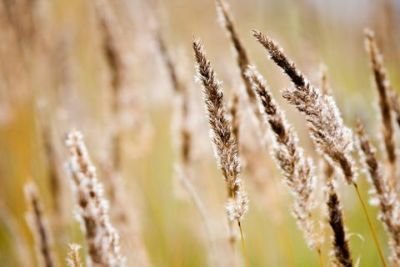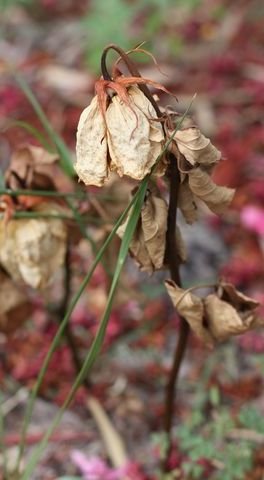Bur Clover
Bur Clover/Burclover (Medicago minima) Also known as Hop Clover.
So what is the difference between the above two, M. minima and M. lupulina, when Medicago polymorpha is also referred to as a Bur Clover? M. polymorpha is more specifically referred to as California Burclover. It also has a different looking hop, or seed pod.
| Photos l-r: Fomax, Tigerente, Lxitixel |



- Medicago minima -------- Medicago lupulina ------ Medicago polymorpha
These weeds are cool season annuals, biennial, and a short lived perennials. Stems are sprawling, flexible branches that eventually grow upward. There are three oblong leaflets on the stem. The center leaflet is born of a short branch, or pediole, of the stem. Attached to the center leaflet are two outside leaflets.
This weed has a roundish flower head, about a 1/2 inch in size, consisting of cluster (up to 50 small yellow flowers) on a separate branch about 1/8 inch long.
This weed gets it's name from the bur that houses one seed only. The bur is a little pod that turns black when mature. Because the pod is sticky it adheres easily to anything, including us. This way the seed can transfer and re-seed.
Bur clover can be found in meadows, roadsides and other poorly maintained soils. It is considered non-competitive and taller vegetation can crowd it out. If this weed has a strong presence it is indicative that soil has fertility problems (see below).
Bur Clover sprouts by seed and creates a shallow taproot that spreads. Because much the weed runs low to the ground grass cutting is usually ineffective. The weed usually grows outward in lengths up to 2 feet wide. If left unmowed this flowering weed is capable of growing upward up to 2 feet tall as well.
Manual removal, whether pulling or hoeing, is possible but usually creates more weeds. Using a propane torch to heat soil and burn weed seeds can be effective and also applying a preemergent in the fall to kill weed seeds before germination helps. If using post-emergents, try a non-selective glyphosate.
Probably the most effective method of extermination would be to understand soil testing methods and check your soil pH. Nitrogen is the biggest factor here. If it is lacking in soil, along with a percentage of phosphorus weeds are highly likely to grow.
Two other weeds that look similar to Bur Clover and above Medicago species...
These are yellow wood sorrel and white clover. There is a distinguishable difference when looking at the leaves of these when comparing each of them to bur clover.
- Yellow wood sorrel has 3 leaflets that are more heart shaped in appearance and have a crease, or fold at the mid-vein.
- Outside of the difference in the flower and its color, the leaflets on white clover have white blotches on them.
FYI:
- Fertile soil is necessary for diverse plant life. Nutrients and minerals necessary include nitrogen, phosphorus, potassium and other trace elements. Organic matter is also imperative not only for fertile soil, but greatly improves soil structure, which helps to retain moisture.
Infertile soil has difficulty sustaining plant life. It is considered unproductive because it is sterile or lacking many of the nutrients and/or trace elements to be productive.
Depletion of soil nutrients can happen for a variety of reasons. It bottoms down to the nutrients and trace elements not being replenished, or soil being maintained, where plant life has difficulty growing.
Related Articles:
Herbicide Options
Understanding Soil
Back from Bur Clover to home page Easy Butterfly Garden.com
 Copyright © 2010-2022 Easy-Butterfly-Garden.com
Copyright © 2010-2022 Easy-Butterfly-Garden.com
Privacy Policy Disclaimer

Join Easy Butterfly Garden on Facebook
Recent Articles
-
Mulch Types
Aug 02, 16 03:49 PM
Mulch types for natural weed control are detailed along with cross-over options that can also amend garden soil. This page helps in choosing the best mulch option for gardeners needs.
-
Butterfly Garden Building with Easy to Understand Resources
Jul 29, 16 09:41 PM
Easy Butterfly Garden is designed for the beginner gardener but others can benefit as well. Each page is easily detailed with subjects from DIY tips for gardening to common gardening problems.
-
How to Test Your Soil
Jul 24, 16 10:40 PM
Before spending any money here are a few simple ways how to test your soil giving ideas of soil types when starting a garden. Other options are purchasing soil testing kits, along with other options.
-
Soil Testing Methods
Jul 24, 16 10:30 PM
A home soil test kit vs. professional soil testing methods? Both are used in testing soil pH. One gives basic information and the other details your garden soil nutrients.
-
Post Emergent Weed Control
Jul 24, 16 09:35 PM
Post emergent weed control is one of two categories for herbicides. The second is pre-emergent herbicide.







New! Comments
Have your say about what you just read! Leave me a comment in the box below.